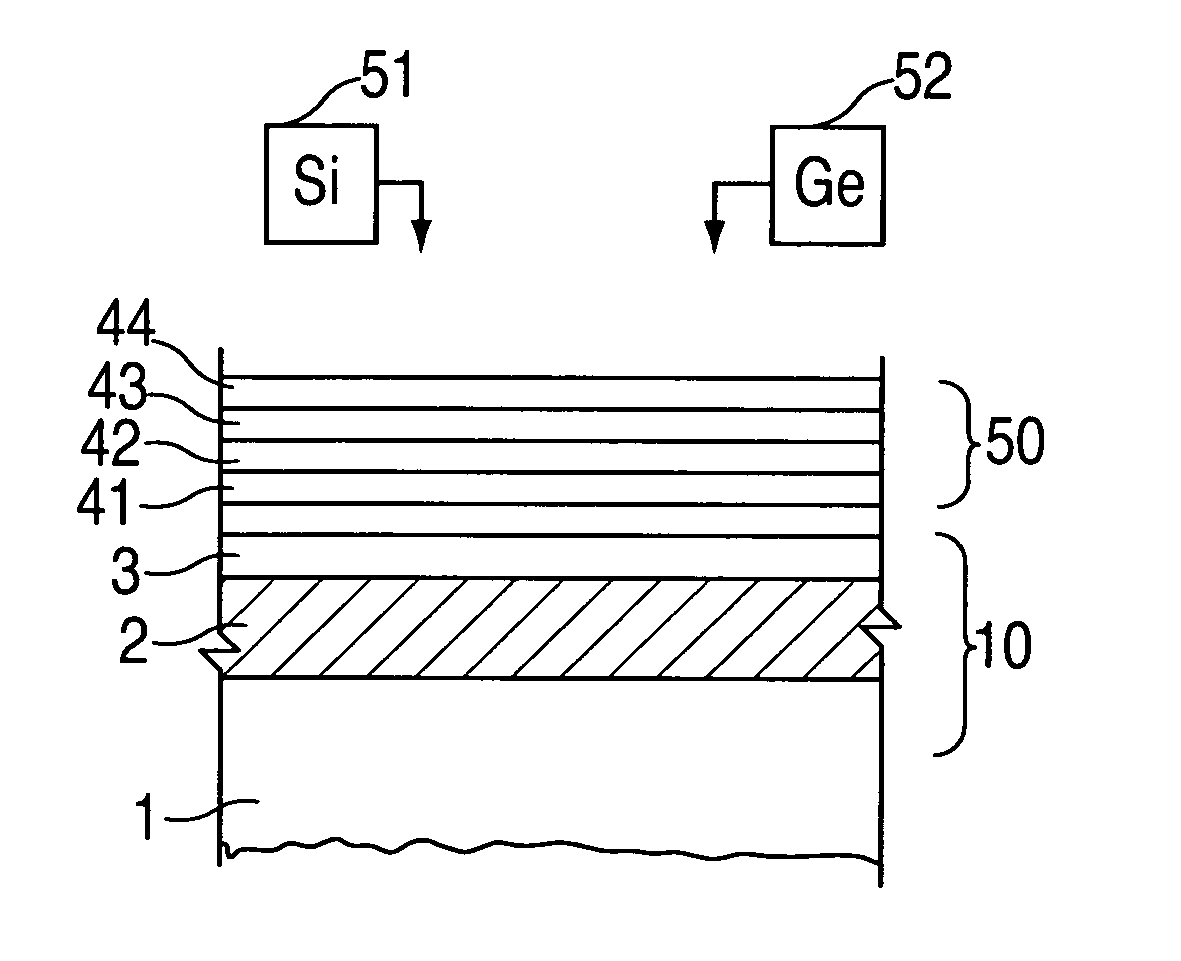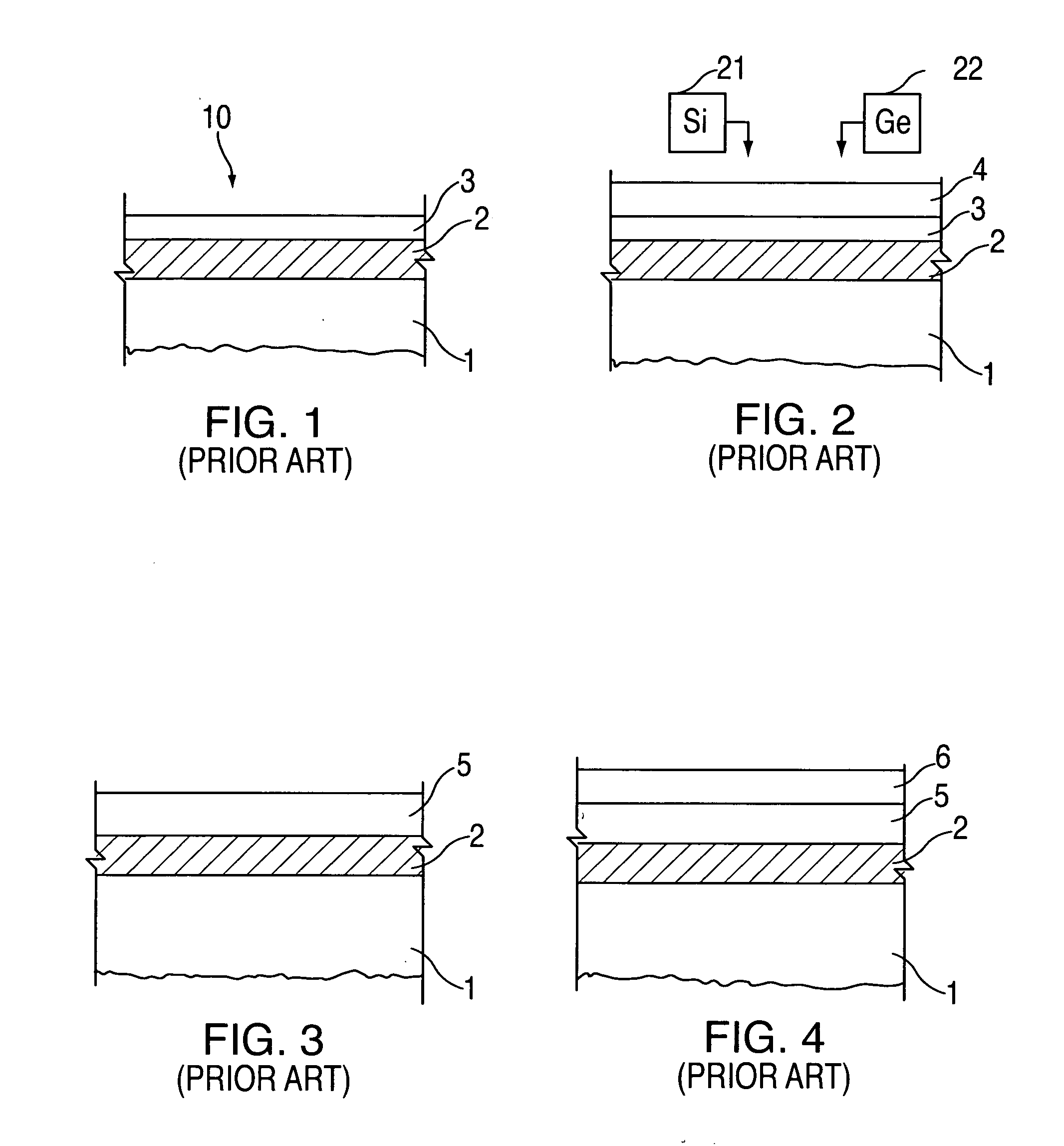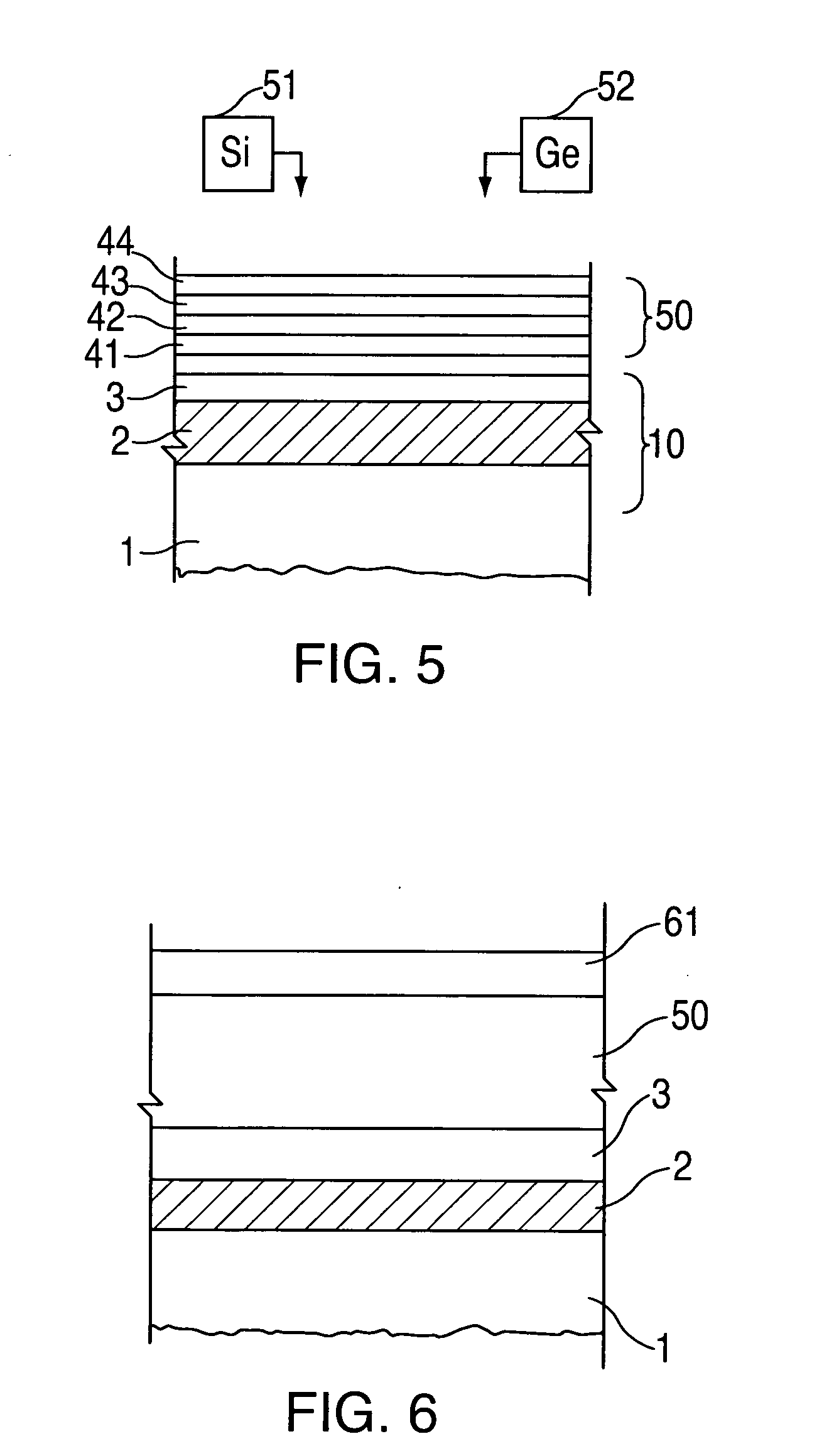Method of forming strained silicon materials with improved thermal conductivity
a technology of strained silicon and thermal conductivity, which is applied in the direction of basic electric elements, semiconductor devices, electrical equipment, etc., can solve the problems of poor thermal conductivity of sige alloy materials, degrade the dc characteristics of transistors fabricated on the bilayer structure, and device fabrication in a si/sige bilayer structur
- Summary
- Abstract
- Description
- Claims
- Application Information
AI Technical Summary
Problems solved by technology
Method used
Image
Examples
Embodiment Construction
[0018] In accordance with the present invention, a layer of SiGe alloy is formed on a substrate (typically bulk Si, SOI or SGOI); the SiGe alloy layer has reduced mass variance and hence higher thermal conductivity than a layer of random SiGe alloy. This is accomplished by forming the SiGe layer as an ordered digital alloy, as opposed to a random alloy.
[0019]FIG. 5 illustrates a SiGe digital alloy formed by the process of the present invention. The substrate 10 (here shown as an SOI structure with Si layer 3 and insulator 2 on bulk substrate 1) is placed in a processing chamber where layers of either Si or Ge may be deposited on the substrate using Si and Ge sources 51, 52. A variety of deposition techniques may be used, including ultrahigh-vacuum CVD (UHVCVD) and low-temperature epitaxy (LTE), preferably at temperatures less than 650° C.
[0020] A thin layer 41 of Si is deposited on the substrate, and a thin layer 42 of Ge is deposited on layer 42. Alternating layers 43, 44, etc. o...
PUM
 Login to View More
Login to View More Abstract
Description
Claims
Application Information
 Login to View More
Login to View More - R&D
- Intellectual Property
- Life Sciences
- Materials
- Tech Scout
- Unparalleled Data Quality
- Higher Quality Content
- 60% Fewer Hallucinations
Browse by: Latest US Patents, China's latest patents, Technical Efficacy Thesaurus, Application Domain, Technology Topic, Popular Technical Reports.
© 2025 PatSnap. All rights reserved.Legal|Privacy policy|Modern Slavery Act Transparency Statement|Sitemap|About US| Contact US: help@patsnap.com



